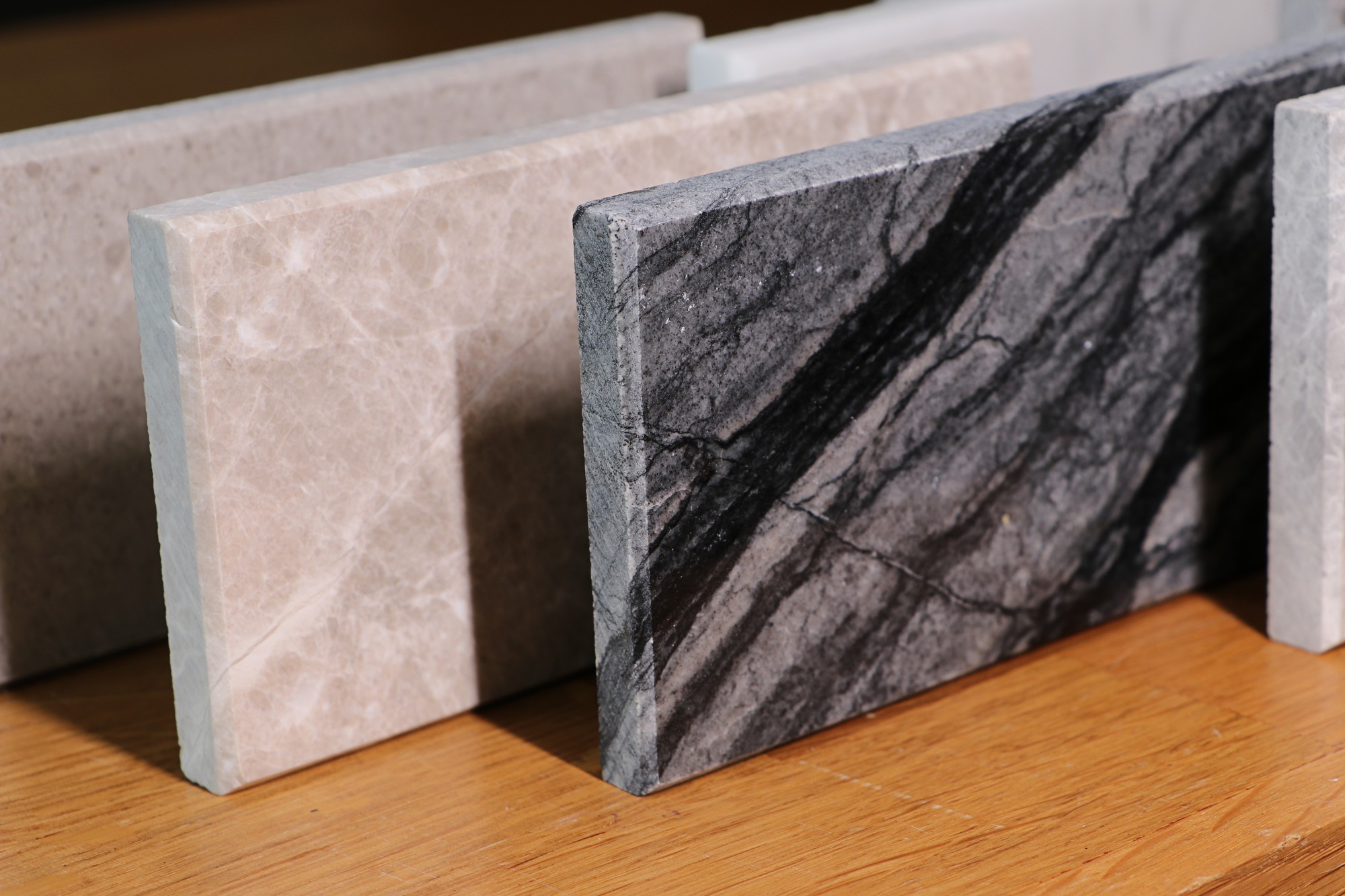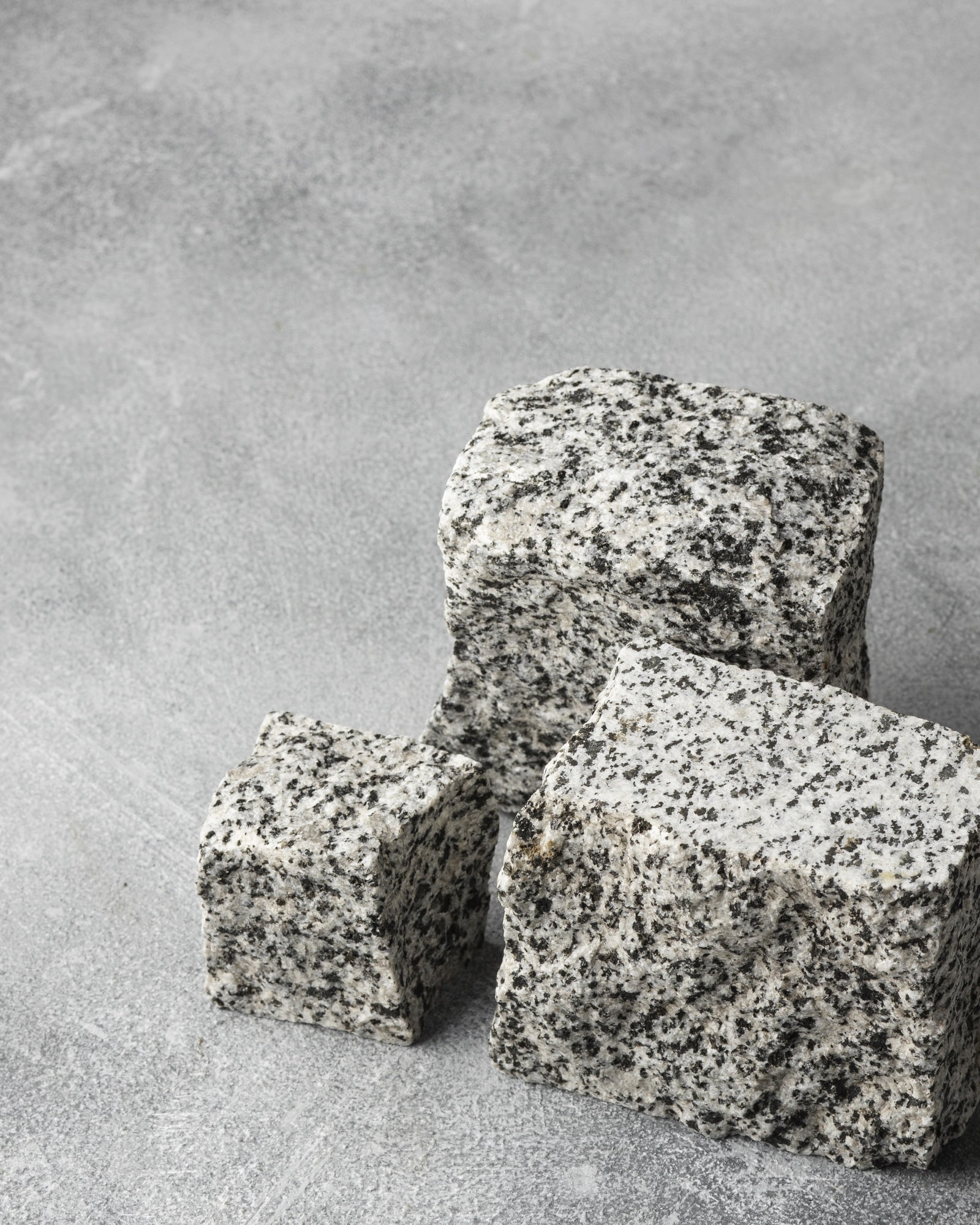Marble and sintered stones are widely chosen for countertops, flooring, and various surfaces in residential and commercial settings. Each material possesses distinct qualities and advantages that cater to different needs. This article will thoroughly compare sintered stone and Marble across various aspects, including composition, appearance, durability, cost, applications, and environmental impact. This comparison provides valuable insights for decision-making when selecting the most suitable material for your upcoming project.
Composition and Manufacturing Process
Sintered stone is an artificial material composed of natural minerals such as quartz, silica, and porcelain that are compressed and heated to create a dense, non-porous surface. On the other hand, Marble is a natural stone formed from limestone that undergoes metamorphism under high pressure and temperature conditions. This results in a crystalline structure with unique veining and patterns.
Appearance and Aesthetic Appeal
Sintered stone offers a wide range of colors, patterns, and finishes, including options that mimic the look of natural stone like Marble. It can replicate the veining and texture of Marble with remarkable accuracy, providing a versatile and customizable alternative. On the other hand, Marble boasts a timeless elegance and natural beauty with its unique veining patterns and color variations. It has a classic and luxurious appearance that adds sophistication to any space.

Durability and Maintenance
Sintered stone is highly durable and resistant to scratches, stains, heat, and UV rays, making it ideal for high-traffic areas and outdoor applications. It requires minimal maintenance and is easy to clean with soap and water. Marble is also durable but requires more maintenance to preserve its beauty. It is prone to scratching, staining, and etching from acidic substances and requires regular sealing to protect against damage.
Cost and Affordability
Sintered stone is generally more expensive than Marble due to its manufacturing process and advanced technology. However, it offers long-term value with its durability and low maintenance requirements. Marble is more affordable upfront but may incur higher maintenance costs over time, including sealing and repairs.
Applications and Usage
Sintered stone is versatile and suitable for various applications, including countertops, flooring, wall cladding, and outdoor surfaces. It is commonly used in kitchens, bathrooms, and outdoor kitchens due to its durability and resistance to heat and moisture. Marble is also versatile but widely used in luxury residential and commercial projects for countertops, flooring, backsplashes, and decorative accents.

I suggest you read it: Choosing and Caring for natural stones used in the building
Environmental Impact
Sintered stone is considered more environmentally friendly than Marble due to its manufacturing process, which uses recycled materials and produces minimal waste. It is also recyclable at the end of its lifespan. As a natural stone, Marble is a finite resource that requires quarrying and extraction, which can have a significant environmental impact.
In conclusion, although sintered stone presents several advantages in terms of durability, versatility, and ease of maintenance, Marble remains unparalleled in its natural beauty, timeless elegance, and overall aesthetic appeal. Marble’s unique veining patterns, subtle color variations, and luxurious appearance create a sense of sophistication and refinement unmatched by any artificial material. While sintered stone may offer practical benefits such as resistance to scratches and stains, it lacks the inherent charm and character that Marble exudes. Furthermore, Marble’s ability to elevate the ambiance of any space with its innate elegance and timeless allure makes it a preferred choice for discerning homeowners, designers, and architects alike. Despite the additional maintenance requirements, Marble’s enduring value and aesthetic superiority make it the ultimate choice for those seeking to make a lasting impression with their residential or commercial projects.

 Marble
Marble